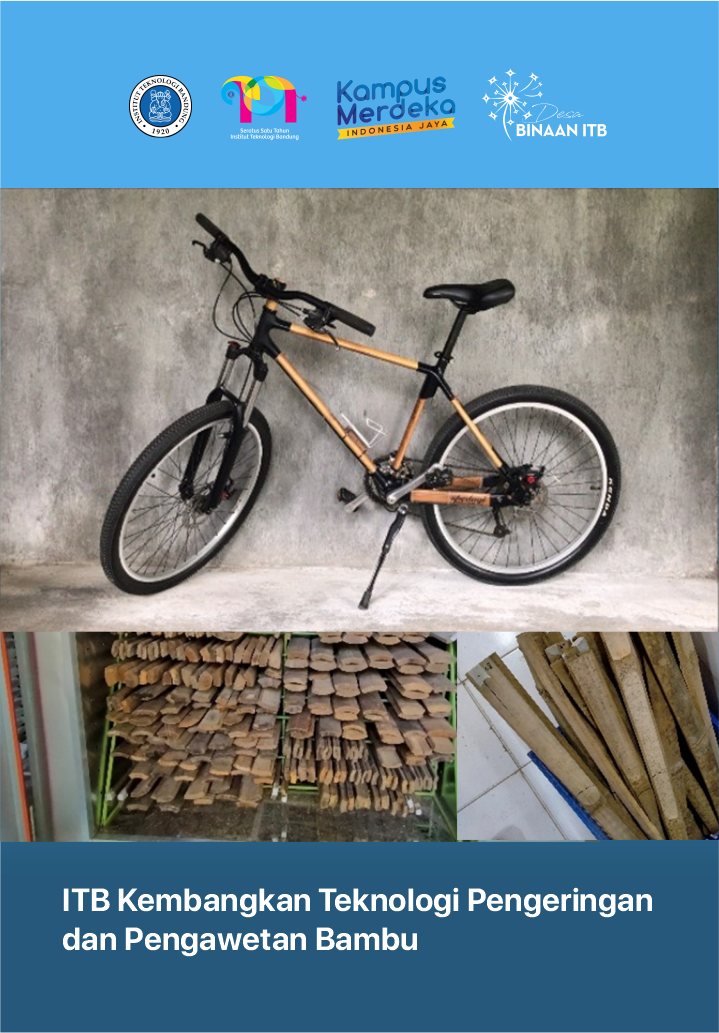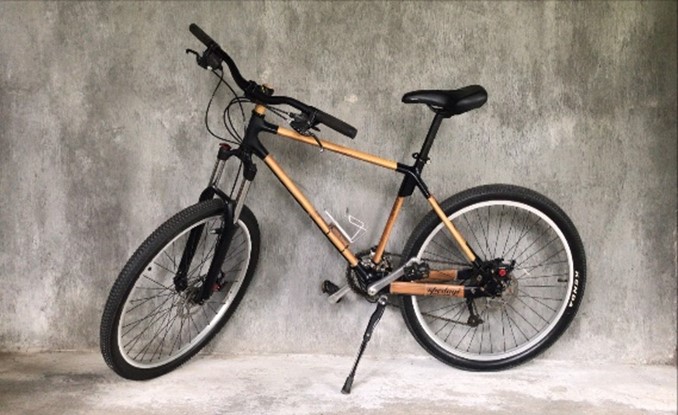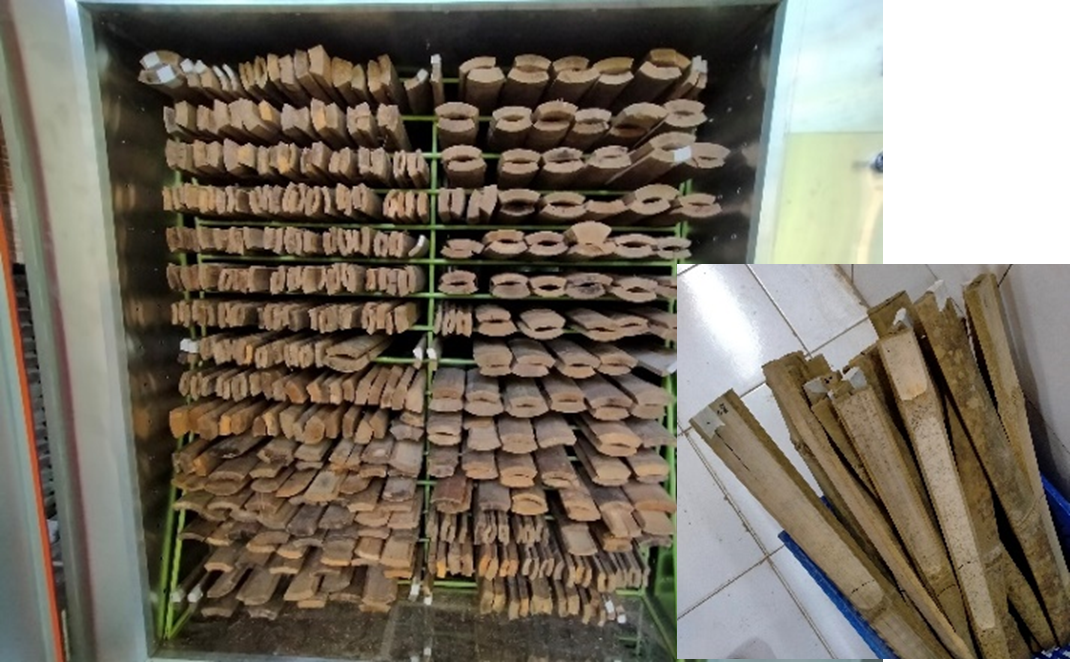

BANDUNG, lppm.itb.ac.id-Bamboo has many advantages including having high strength so it is widely used as a building material and as a craft material. In addition, weaknesses are also found in bamboo materials, especially related to its low durability and high water content, so that bamboo is less stable in conditions of use. With the natural nature of bamboo like this, the risk of bamboo being damaged by fungi and insects becomes very large. This greatly hinders the further use of bamboo. Utilization of bamboo to be able to produce products with high added value requires good quality raw material processing as well. Indonesia as a bamboo producing country is currently still relatively lagging behind in terms of the availability of bamboo processing technology.
The problem faced by bamboo craftsmen related to the production process is the process of drying and preserving bamboo which has been carried out without the right technology. Therefore, drying and preserving bamboo is the most important work process in a bamboo processing process.
This phenomenon has become a trigger for lecturers at the Bandung Institute of Technology through community service activities from LPPM-ITB to provide a touch of bamboo drying and preservation technology needed by one of the bamboo bicycle craftsmen in Temanggung Regency, Central Java. This technology arrangement was carried out by two Lecturers of the School of Biological Science and Technology (SITH) ITB, namely Ihak Sumardi Ph.D., and Rudi, Ph.D. These two lecturers did service at the bamboo bicycle craftsman "Spedagi" in Kandangan Village, Kandangan District, Temanggung Regency, Central Java. The "Spedagi" bamboo bicycle uses solid oval-shaped bamboo from the laminated type of petung bamboo (Dendrocalamus asper).
Referring to the preservation and drying process carried out by the bamboo bicycle craftsman "Spedagi" which has been carried out so far, it shows that the bamboo drying process itself takes a long time until the bamboo is completely dry. And even then the drying results are not evenly distributed in all parts of the bamboo pieces. As a result, the bamboo pieces become wet and have orange stains due to the attack of dye fungi and bamboo rot fungi. Furthermore, these pieces of bamboo do not meet the standards in the subsequent process into strips and laminated products. In service activities, the two SITH-ITB lecturers provided bamboo drying and preservation technology with the aim of producing a small-scale technology that can produce durable, dry and unbreakable bamboo strips in a shorter time at a lower cost.
Solar drying oven technology on bamboo
The technology starts from the process of sorting bamboo pieces/slats based on the part of the bamboo stem (base, middle, and tip). Bamboo slats that come from the same part of the stem before being dried in the oven, it is better to dry naturally using a solar drying oven with the heat source coming from the sun. The development of a solar drying oven natural drying system began with the manufacture of a prototype made for drying bamboo slats with a maximum length of 60 cm. The slope of the solar drying oven is about 10 degrees because it is used for tropical areas and has a passive airflow. This prototype can be used every day, optimum when there is sunlight and it is not covered by shadows of other objects. The prototype has been tested on sunny, sunny, cloudy and rainy days.
This drying process will reduce the moisture content of the bamboo slats to a maximum of 50% before entering the oven. The closer to the dryness value to be achieved, the further drying process with the oven becomes faster. The bamboo slats that are pre-dried in a solar drying oven will not cause cracking when they are oven-dried. Further drying is carried out using an oven at a temperature of 60-80 degrees Celsius, until the moisture content of the bamboo slats reaches less than 10%. This combined drying process technology can reduce energy use in the oven drying process and can shorten the oven time from 6 days to 3 days.
Preservation of bamboo stems has been tried using borax-boric solution as a preservative to prevent bamboo pieces from being attacked by fungus and powder. The Boucherie method with a pressure modification of 1.5 bar was carried out to insert the preservative solution into the bamboo stem. The preservation process begins by entering the preservative solution into the preservative tank. Fresh bamboo sticks with a length of 1 meter are then connected to the nozzle of the pipe and clamped. The clamps are tightened to prevent leakage of the preservative solution. The preservation results show that this method is proven to produce a shorter preservation time and high retention compared to the conventional preservation method through boiling which has been done by craftsmen.
At the end of this community service activity, a collaboration (MOU) was carried out between SITH-ITB and the "Spedagi" bamboo bicycle craftsman. From this collaboration, it is hoped that there will be a good link between bamboo craftsmen and universities in the fields of education, research and community service which ITB will continue to do.
Editor: Ali Hasan Asyari






